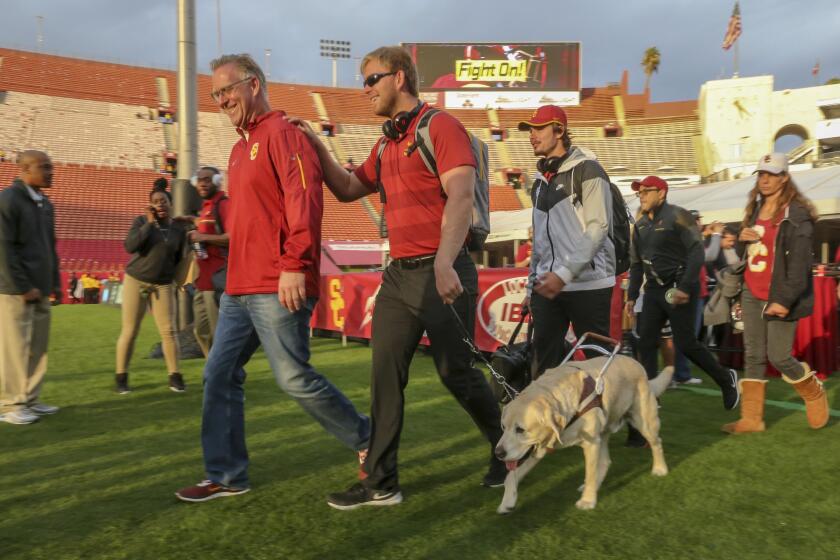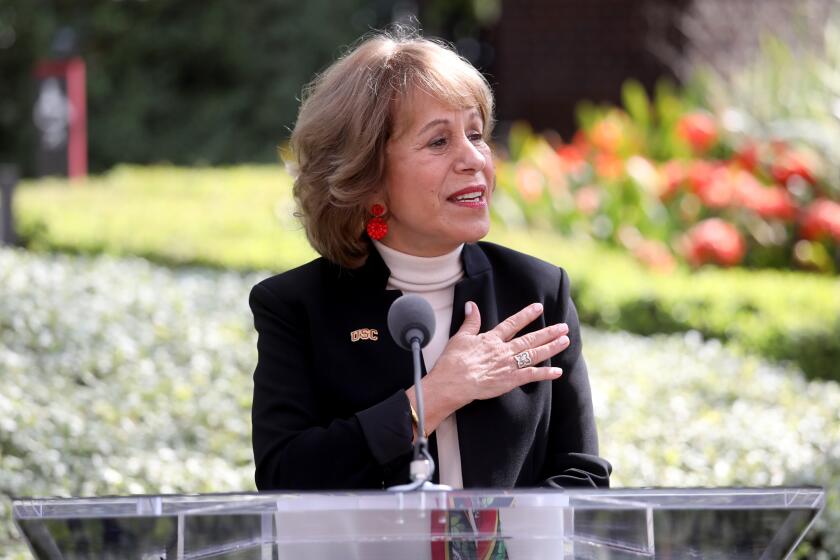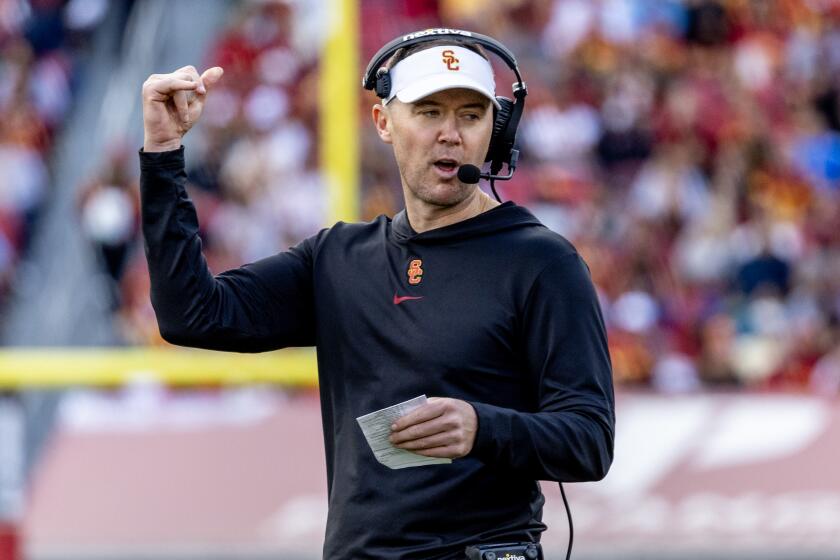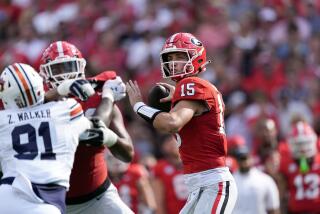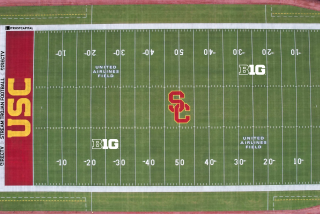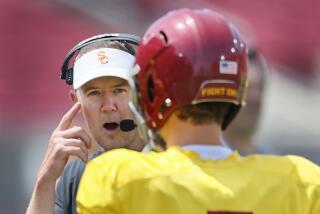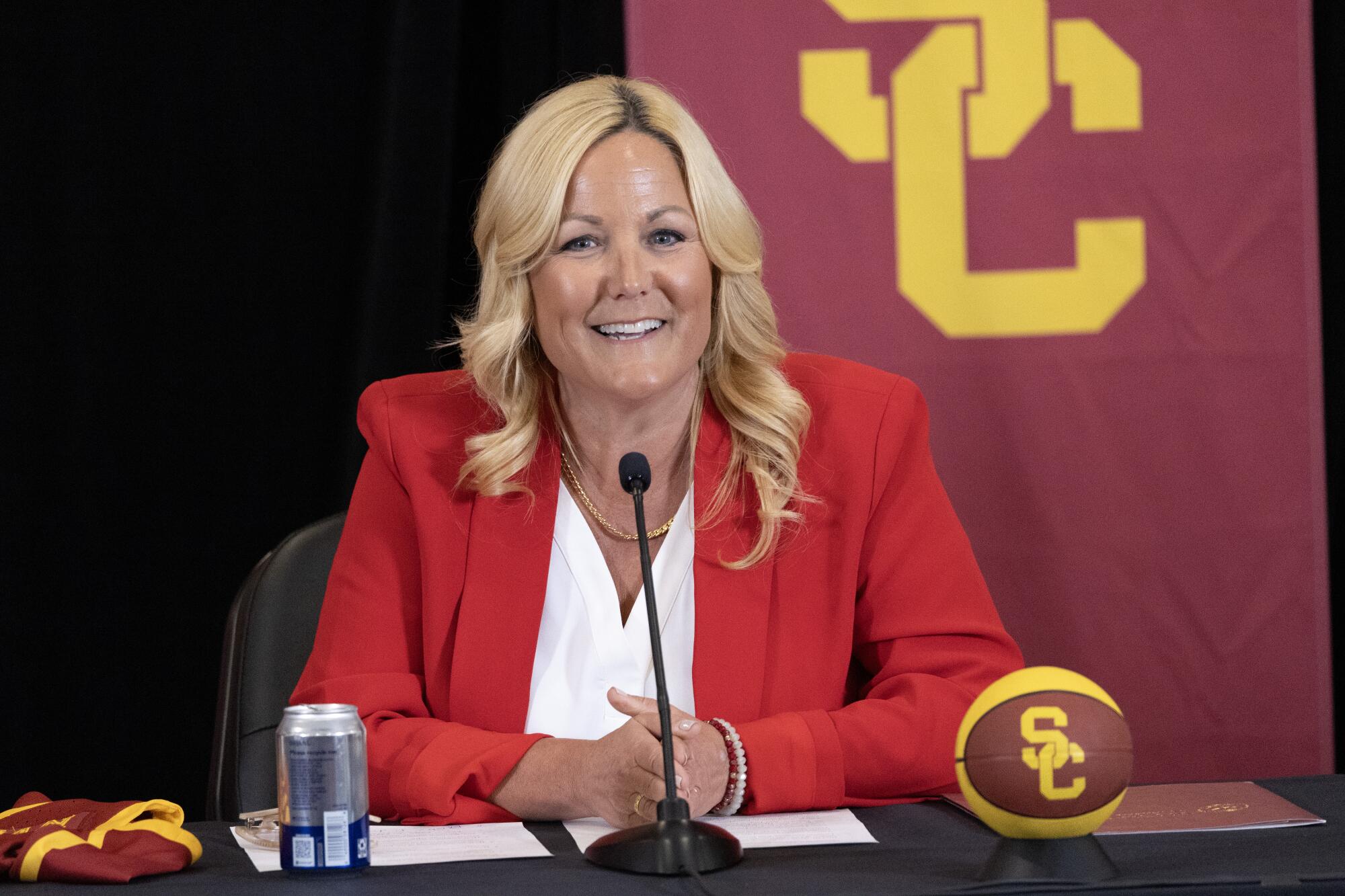
Nearly two months after the NCAA and its power conferences agreed to a settlement that would allow college athletes to be paid directly by their schools, USC athletic director Jennifer Cohen still has far more questions than answers about where college sports is headed.
Cohen canât say much right now about the schoolâs plans for sharing revenue with its athletes as the final details of the settlement and revised NCAA rules structure are still being negotiated, other than to assure that âevery possible model is being exploredâ at USC.
While her colleagues across the country warn of budget shortfalls and existential crises, Cohen said she has no qualms about leaving the past behind. As she sees it, college sports and its leaders have a chance to start anew, with a system that actually makes sense for an era thatâs already upon us.
âYou have to stay big-picture in your thinking,â Cohen told The Times. âWe canât hold on to things that donât exist anymore. We have to do business differently, and we have to support students and coaches and athletic programs and universities differently.â
Quebec, a guide dog and Jake Olsonâs companion of 13 years while he overcame blindness to serve as long snapper at USC, has died at 14.
Doing business differently, once the settlement is finalized, means a major new line item in athletics budgets across the country. Starting in the fall of 2025, schools would be permitted â albeit not required â to share with their athletes a reported $22 million annually, divvying up the money as they please among teams and athletes. During the next decade, theyâll also have to pay a portion of the $2.8 billion in damages to former college athletes that was agreed upon in the settlement.
Those expenses wonât be easy for smaller schools to stomach. At San Diego State, for instance, $20 million would account for one-third of the schoolâs athletics revenue in 2023. At San JosĂŠ State, it would represent more than half of the schoolâs athletics revenue.
âThat disparity [in college football] was already as big as the Grand Canyon. Extending it another 100 feet isnât going to do anything,â said B. David Ridpath, a professor of sports business at Ohio University and longtime member of the Drake Group, a college sports industry watchdog.
At USC, where the university reported $212 million in total athletics revenue and expenses for the 2022-23 school year, according to the Department of Education, sharing a $20-million slice of that revenue wonât be so heavy of a lift. Nor will top programs like USC have much of a choice whether to share the full amount possible with athletes â at least, if they hope to keep up on the recruiting trail.
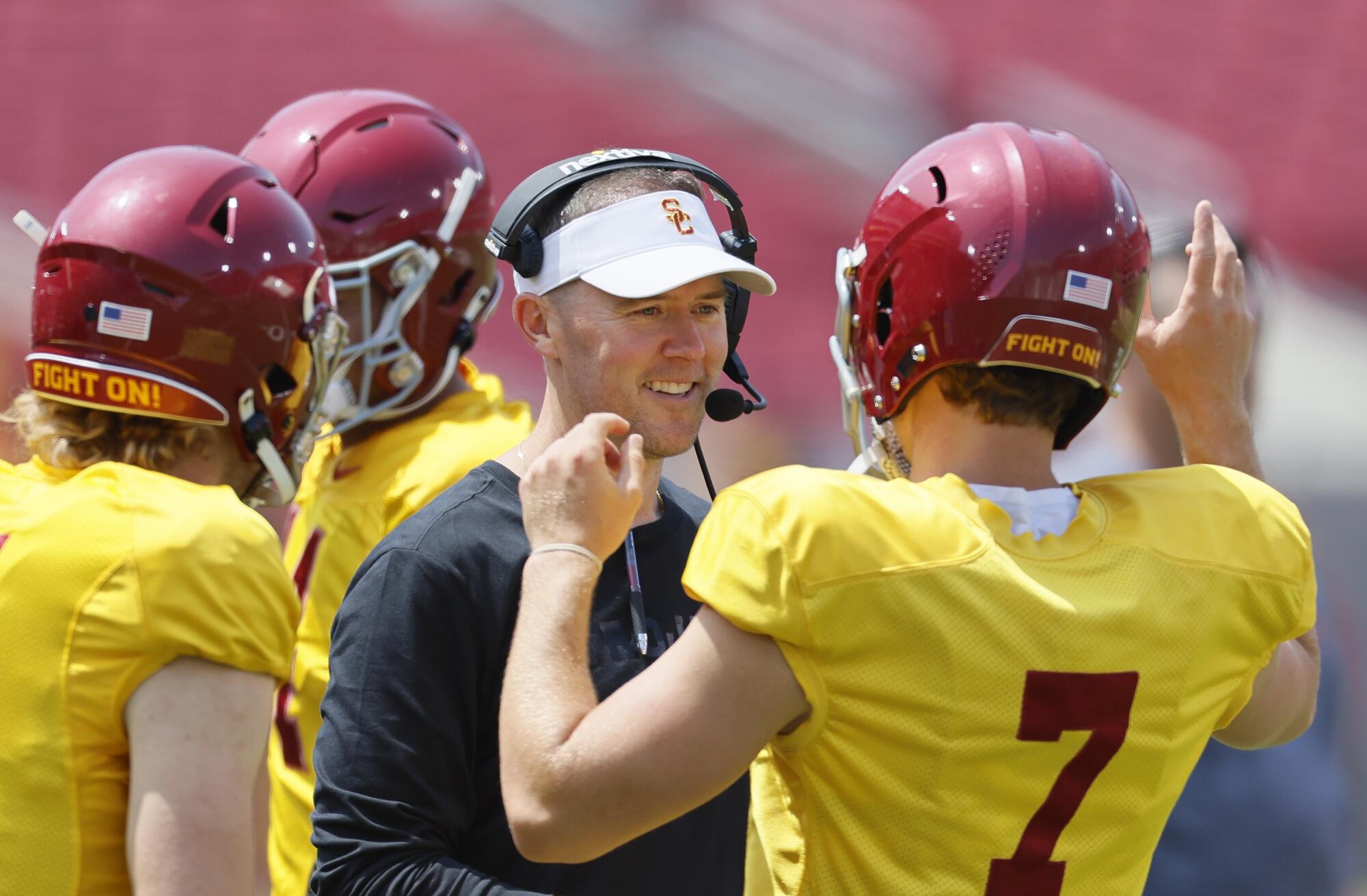
At SEC football media days this last week, several coaches said they expected to have at least $15 million available to divide among their players.
Cohen said she needed more clarity before discussing any specifics about how USC would handle the revenue-sharing cap. And indeed, there are still a bevy of questions for the sportâs leaders to consider before properly determining that total.
Roster size limits, in lieu of scholarship caps, still must be agreed upon between schools and conferences, so athletic departments can strategize how to allocate the money across sports. The Department of Education, which enforces Title IX gender equity rules, still has yet to offer details on how Title IX applies to revenue sharing and womenâs sports. And no one knows for sure how NIL will function â and with what level of enforcement â when schools are already paying their players a portion of their revenue.
Even the $22-million figure is subject to change, with other factors like Alston awards to consider.
But âas far as being fully invested [in sharing revenue]?â Cohen said. âAbsolutely.â
The university certainly hasnât hesitated to pour money into athletics in recent years, beginning with its splashy hire of football coach Lincoln Riley. Riley cost USC nearly $20 million in 2022, including a $10-million salary that made him the fourth-highest-paid coach in college football. With Riley also came Alex Grinch, who at $2 million a year became one of the highest-paid coordinators in college football, only to be fired before the end of his second season. (His replacement now also makes $2 million.)
USC President Carol Folt, who has drawn praise for expanding student programs and boosting athletics but criticism for her handling of pro-Palestinian protests, has received an extension to her five-year contract by university trustees.
New athletics facilities continue to sprout across campus as part of USC President Carol Foltâs âmoonshotâ plans for the university. A $38-million stadium for womenâs soccer and lacrosse is expected to open next fall. A three-level football performance center and gleaming practice field will be ready in 2026, followed by a repositioned baseball complex to replace Dedeaux Field, which was demolished to accommodate the football facility. Other upgrades have already been made to Galen Center, the basketball arena, while the McKay Center, which cost $70 million when it opened just 12 years ago, is slated for its own glow-up.
USC hasnât disclosed the estimated cost of the football performance center, a rebuilt Dedeaux Field or the upgrades to other facilities. But certainly none of those construction projects comes cheap.
And then thereâs the obligation to create name, image and likeness compensation opportunities for athletes, which already cost most top football programs between $11 million and $20 million annually. At USC, where NIL has been a source of consternation since its inception, the NIL budget has grown considerably since Cohen took over. But itâs unclear now what will become of that landscape as donor-led NIL collectives insist theyâll continue paying players while conference commissioners assure theyâll be reined in thanks to the revenue-sharing settlement.
USC would presumably stand to benefit from a stricter enforcement structure that penalized pay-for-play, where it was already lagging behind some elite programs, and forced schools to tap more into their marketing and brand power, where the school is particularly strong. But if college footballâs recent history is any indication, top schools will find some way to circumvent whatever system is in place.
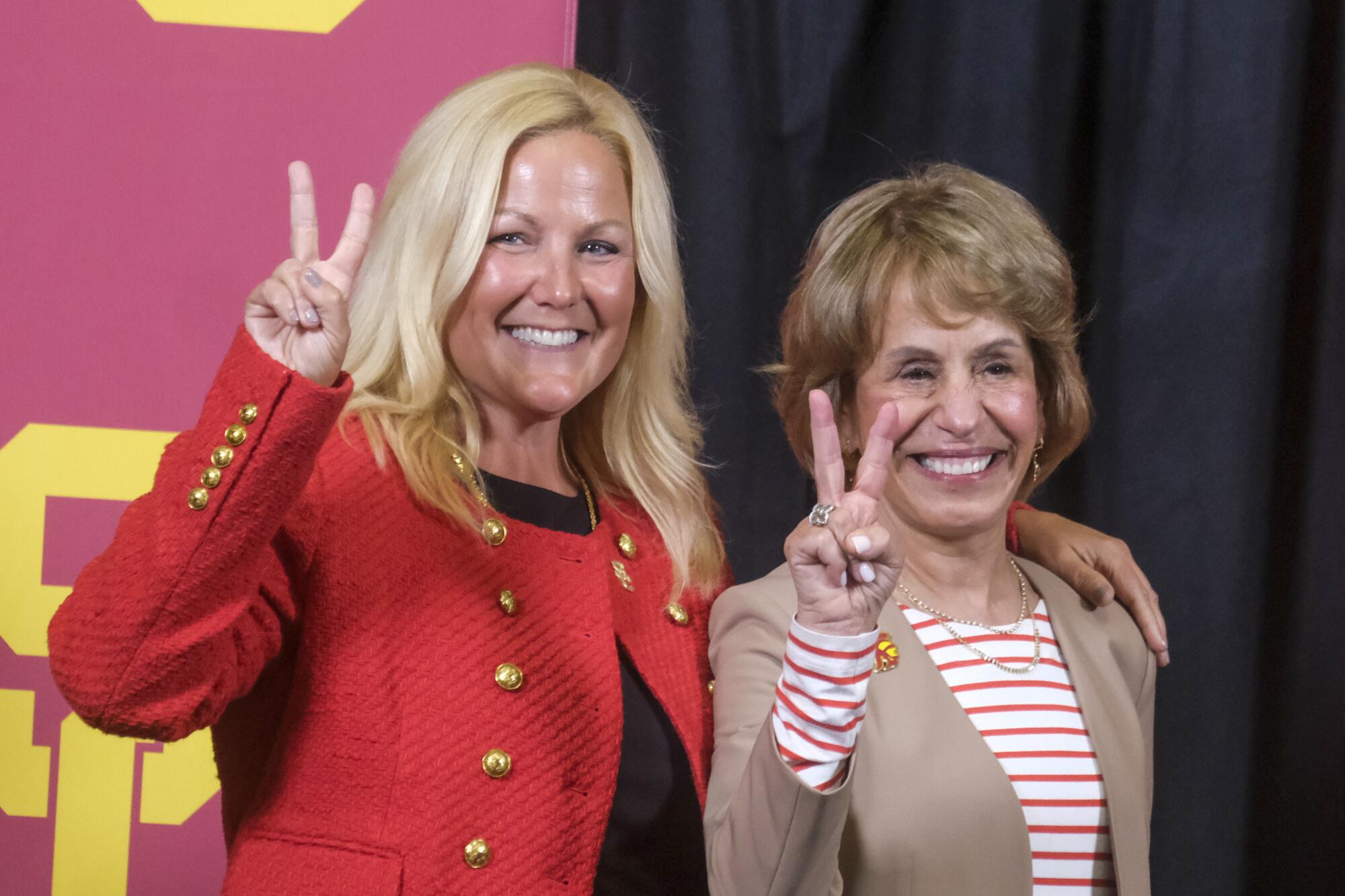
âWe really need to be flexible and adaptable,â Cohen said. âWeâve had, this past year, really good success in fundraising for NIL. What this looks like in the future, weâre not sure, but weâre going to have to be excellent at it.â
Asked if she expected those future expenses to put a strain on USCâs athletics operation, Cohen said the department has âwork to doâ but is âwell positioned to manage the landscape change.â
Of course, a new conference and the promise of a massive media rights payout â worth between $50 million and $70 million more per year than the Pac-12 distributed in its final season â should help ease that transition.
âAll athletic directors are thinking 24/7 about revenue generation,â she said. âSince Iâve been an AD, every day, every year, youâre challenged with finding more and new resources. The good news for us at USC is we have significant upside and unlimited potential to continue to monetize our athletic program, so weâve got to roll up our sleeves.â
How far some athletic programs may go to pursue monetization remains to be seen. The Big 12 and its member schools have already had discussions about selling the conferenceâs naming rights. Some Power Four athletic departments, such as Florida State, have explored private equity investment for an infusion of cash. And this fall, all schools will be permitted to sell commercial sponsor advertisements on their football fields, thanks to an NCAA rule change.
Lincoln Rileyâs buyout from Oklahoma, salary and compensation in his first USC season cost the Trojans nearly $20 million, according to tax records.
Cohen wonât rule anything out when it comes to creating revenue. Ads on the field? New naming rights? USC will âput every option on the table before we draw any lines,â she said.
It may be a while before a full framework is finally in place. The settlement still hasnât been filed with Northern California District Court Judge Claudia Wilken, who will decide whether to accept its terms. College leaders will then debate details of a new model for college athletics.
Regardless of where those discussions lead, the new model described in the settlement will give athletic departments the freedom to invest in whatever programs they please. For USC, that could mean 30 baseball scholarships, instead of 11.7. Or a full slate of scholarships â and revenue checks â for beach volleyball standouts.
âThe new framework really does allow for universities to make important decisions about what matters most to them and what they want to support and invest in,â Cohen said, âand I think that flexibility and adaptability is a good thing for college sports.â
More to Read
Go beyond the scoreboard
Get the latest on L.A.'s teams in the daily Sports Report newsletter.
You may occasionally receive promotional content from the Los Angeles Times.

